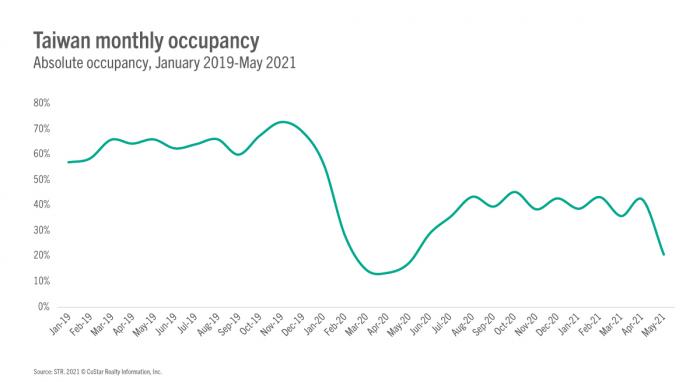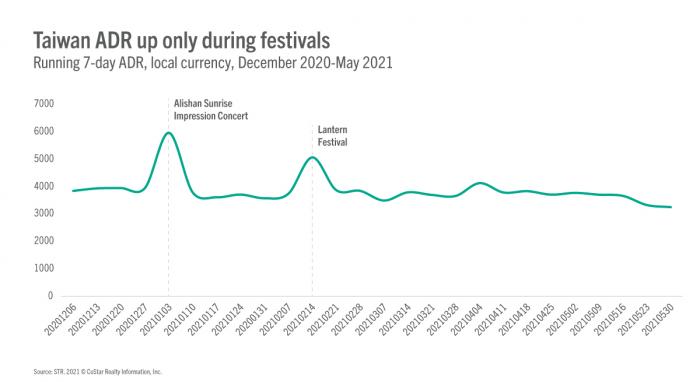Certain markets in the Asia Pacific region are making strong progress toward hotel performance recovery, due almost exclusively to domestic demand. Although domestic demand in Taiwan is not insignificant, the market is still well behind in the recovery process due to a slow vaccination rate and the emergence of new virus variants amid reopening.
In this latest piece, we take a quick look at Taiwan’s occupancy timeline as well as the overall trend around average daily rate (ADR).
Hotel occupancy timeline
As Taiwan effectively controlled the pandemic last year, the government rolled out plans to revive the market’s ever important tourism industry. During the second phase of eased measures (1 July -31 October 2020), government subsidies lifted domestic tourism and in turn produced occupancy levels as high as 45.5% (October 2020) and 43.6% (August 2020). Also, during that period came a reopening of Taiwan’s railways.
A third phase of eased measures (1 October -31 December 2020) included a slow border reopening to international tourists. As illustrated in the chart below, that reopening was not accompanied by an influx of hotel demand as arrivals were predominantly long-term stay residents and not leisure travelers. Most recently, occupancy in the market has worsened and headed back toward the low points of 2020.

